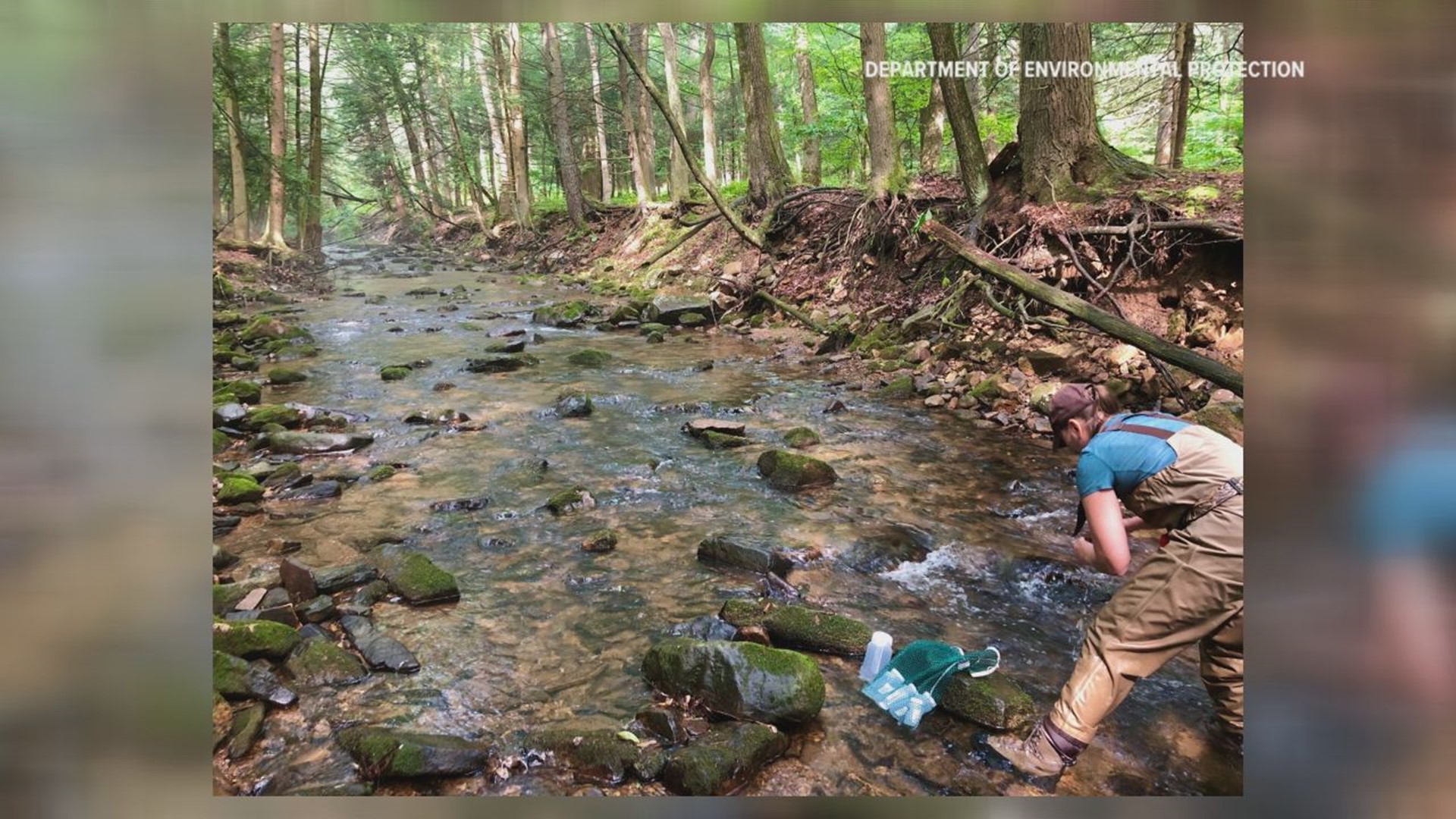HARRISBURG, Pa. — As mandated by the Clean Water Act of 1952, the Pennsylvania Department of Environmental Protection assesses the quality of streams, rivers, and lakes in the commonwealth every two years.
In their latest report, the percentage of impaired stream miles rose from 30 to 33 percent compared with their findings in 2020.
However, this is likely because they are assessing more streams than ever before, according to Dustin Shull of the Bureau of Clean Water at DEP.
“The large majority of the increase of impaired water was simply because we’re looking in other places, we’re looking in other ways to assess our waters," says Shull.
This year’s report included over 5,500 stream miles and over 25,000 public lake acres that were newly assessed.
Lancaster County had the most miles of impaired streams, with 1,286 miles noted. This accounts for 89% of the streams in the county.
A stream or body of water receives the “impaired” designation if it fails to meet standards in at least one of four categories.
“Those categories are aquatic life, so that's fish and bugs, wildlife. Recreation, which would be like boating and swimming, contact sports," Shull says. "Fish consumption, are you able to eat the fish with a certain relativity of safety. And water supply, public water supply."
Shull also notes that Pennsylvanians can see in the report what restoration efforts have been made and areas that have the potential for restoration in the future.
He says that a lot of hard work is going into restoring waterways in Pennsylvania, but also that a lot of work still needs to be done.
The public is encouraged to view the draft of this report, which includes interactive features so you can see what water quality looks like where you live.
The public comment period is open through March 1st.
Once finalized, the report will be sent to the EPA, and will help Pennsylvania receive federal funding for restoration efforts. Data will also be accessible for public use and research opportunities.

